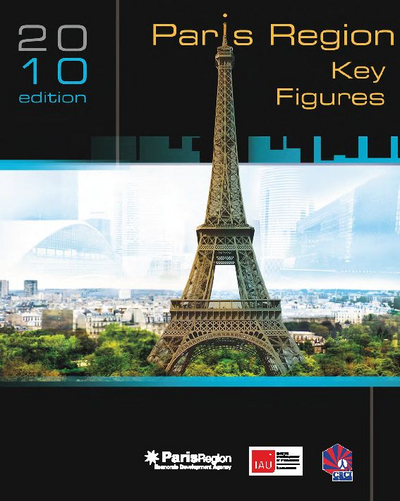Paris Region: Key Figures 2010
In 2008, Paris Region had an estimated population of 11,599,000 inhabitants. It accounted for 18 per cent of the French population and was Europe’s most densely populated region.
A young and cosmopolitan region
Paris Region has 748,000 more inhabitants than in 1999. It also has a high birth rate: 15 per 1,000 compared to the EU average (11 per 1,000). And 56 per cent of the region’s inhabitants are under 40 years old. 12 per cent of the population is of non-French nationality (2006).
A student region that is open to the world
The region had a total of 588,700 students in higher education in 2008-2009. And foreign students account for 20 per cent of the total student population in Paris Region universities. Paris Region also boasts world-ranking higher education institutions that have links with the research centres and the private sector.
8,300 jobs created by international investments
Paris Region is Europe’s no. 1 region for job creation through inward FDI –Foreign Direct Investment. In 2008, with 5,609,900 jobs, the region has 62 per cent of its population that is economically active. Although rising, its unemployment level is balanced with a 7.9 per cent rate (3rd quarter 2009) compared to the EU average. The European Union is Paris Region’s main trade partner, accounting for 47 per cent of total exports and 61 per cent of total imports. And on a nation-by-nation basis, its main client is the United Stated and Germany as its main supplier. In 2008, Paris Region’s GDP was E 552,700 million and stood for 28.3 per cent of the French national GDP.
22 million passengers travelled to European destinations by TGV trains
In 2008, Eurostar carried 9 million passengers and Thalys carried 6 million passengers. 70 daily connections are provided between the airport platforms and the TGV trains (high speed train). With 87 million passengers and 781,300 aircraft movements Paris Region is Europe no.2 for passenger traffic. The region is also Europe’s second largest inland port with 70 harbours and 500 km of waterways (311 mi.)
With 50 million sq. m (539 million sq. ft) of office space, Paris Region was still attractive in 2009
Paris Region was Europe’s no.2 real estate investment market with E 5.2 billion invested. 1.8 million sq. m (19.4 million sq. ft) of office orders were placed in Paris Region (among which 1.4 million sq. m i.e. 15.1 million sq. ft in Central Paris). Moreover, rents for warehouses in the region are extremely competitive compared with the rest of Europe. In 2008, prime rents were still less than E 55/sq. m/year, excluding tax and building charges (as opposed to E 68/sq. m/year in Brussels, E 70/sq. m/year in Frankfurt, E 78/sq. m/year in Madrid and E 189/sq. m/year in London).
Paris Region is home to 4 of Europe’s 10 most visited museums
It attracted 42 million visitors, in 2008. And tourist spending reached E 18.3 billion in 2007. The region has a world-renowned historical heritage and boasts 250 museums, including 4 Unesco world heritage sites. In 2008, Paris Region ranked as Europe’s no.1 region in terms of hotel occupancy (66,182,526 nights).
Paris Region as the world’s no.1 destination for meetings, events and trade shows
10 million visitors generated more than E 5 billion for the local economy. Italy, Belgium, Spain, Germany and the United Kingdom accounted for 40 per cent of exhibiting companies. And meeting and exhibitions industry represented 45 per cent of hotel nights, in 2008.
Paris Region citizens and local authorities are concerned by environmental issues
At the close of 2009, Paris Region launched its climate and energy programme, the first three stages will be rolled out in 2010. Paris Region has 4 public bodies that monitor pollution in the region : Airparif for air pollution, Bruitparif for noise pollution, Naturparif to protect biodiversity and Ordif for waste management. In 2008, 678,000 tonnes of waste (representing 12 per cent of all waste) were recycled to a raw materials recovery operation. Paris Region Key Figures 2010 is a guide providing you with the statistics and maps you need when evaluating Paris Region's offer within the wider French and European environment, gathering detailed information for your market research relating to potential investment projects in Paris Region.
This study is linked to the following theme :
Economy
